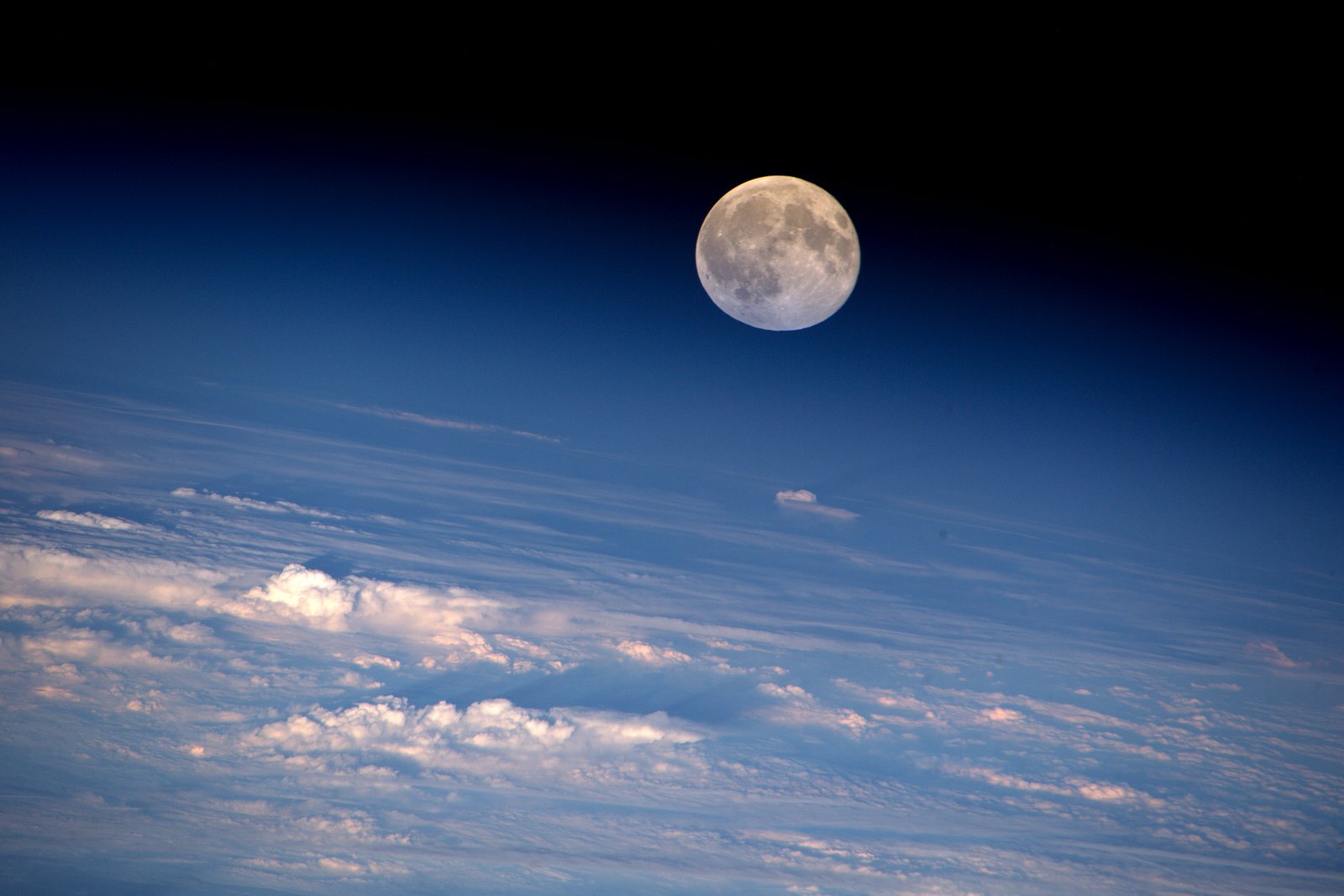Known as LUNA, the facility is a cooperative project between ESA and the German Aerospace Centre DLR. It will accommodate many research areas, scientific activities and technology developments needed to address the challenges facing human and robotic exploration of the Moon, and enhance astronaut training and future mission operations.
Making the Moon
“LUNA will allow us to simulate many of the conditions of working and living on the lunar surface, such as the Moon’s dusty environment, the terrain topology and soil composition, light and – to a certain extent – reduced gravity,” explains ESA’s LUNA project manager Juergen Schlutz.
“It will allow researchers to test technologies for lunar living and exploration, and enable astronauts and operations teams to train in conditions similar to those they will encounter on the Moon. There is currently no facility like this on Earth.”
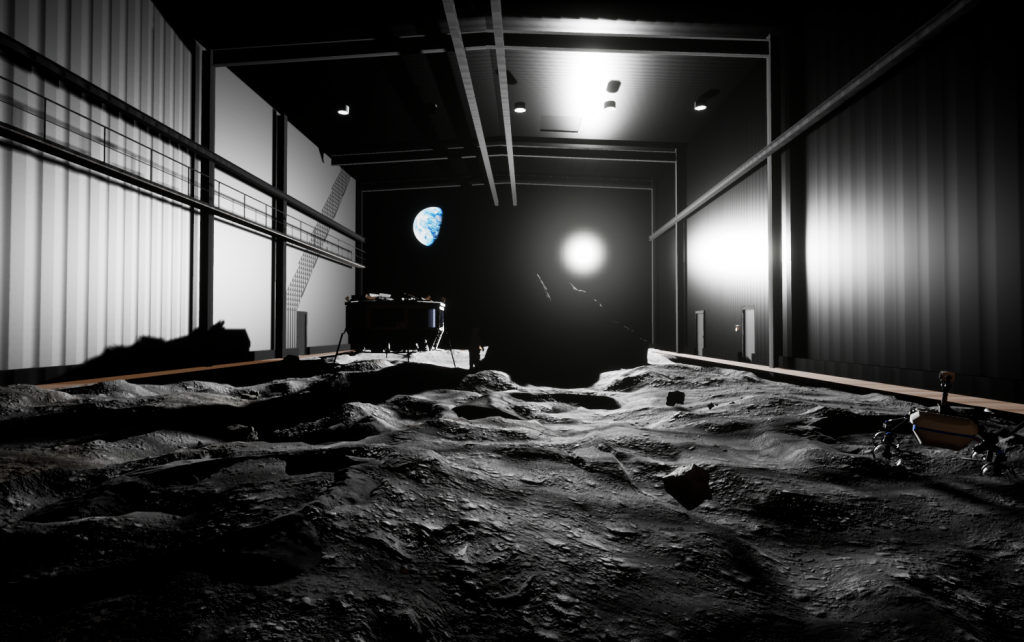
VR model of LUNA’s main hall containing the regolith testbed area. Credits: ESA/DLR-F. Rometsch
The main element of the LUNA facility will be a 700 m2 hall, filled with lunar dust simulant ‘EAC-1’ and rocks or boulders imitating the lunar surface. This area will be a testbed for rovers and astronauts as they determine the best systems, tools and processes for the lunar environment.
To simulate the most realistic, lunar-like working conditions possible, the hall will be equipped with black walls and ceilings. Adjustable lighting will recreate the illumination characteristics on the lunar surface, while the indoor setting and limited climate control will keep the conditions as constant as possible to allow experiments and analogue activities to be reliably reproduced.
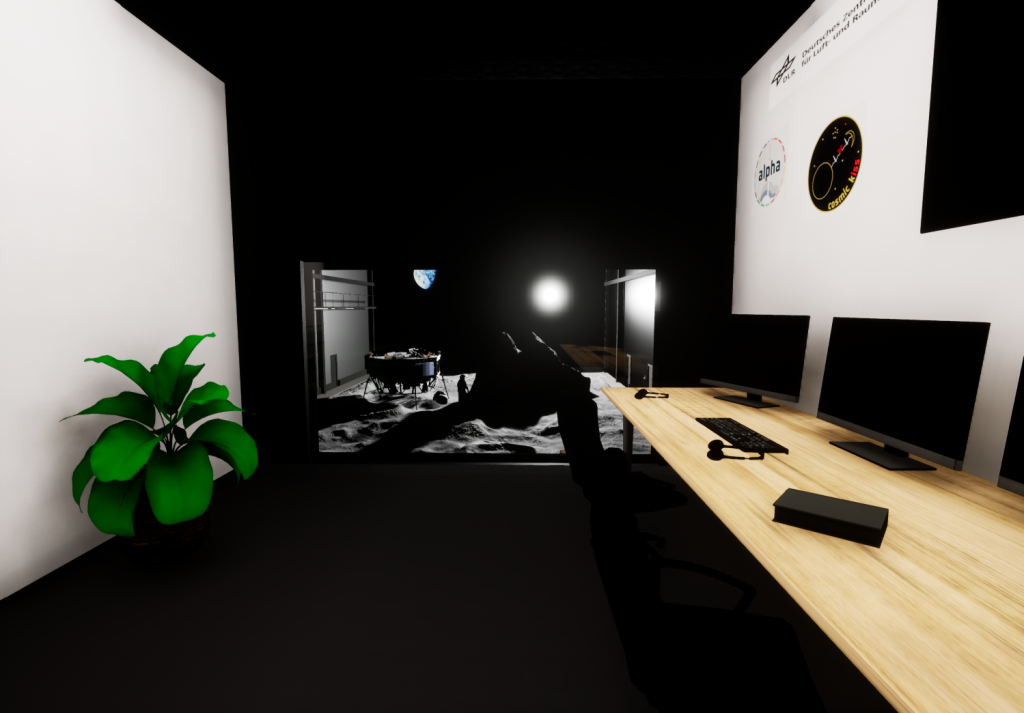
VR model of LUNA’s mission operations room with a view into the main hall containing the regolith testbed. Credits: ESA/DLR-F. Rometsch
LUNA will also feature a habitation module: The Future Lunar Exploration Habitat (FLEXHab) will accommodate further scientific activities and experiments. Located outside of the LUNA hall, it will provide a direct connection to the testbed surface. An airlock ingress and egress setup will allow users to test and prepare for lunar spacewalks known as Extravehicular Activities (EVA), and to assess aspects of dust protection as well as suit and tool cleaning and maintenance.
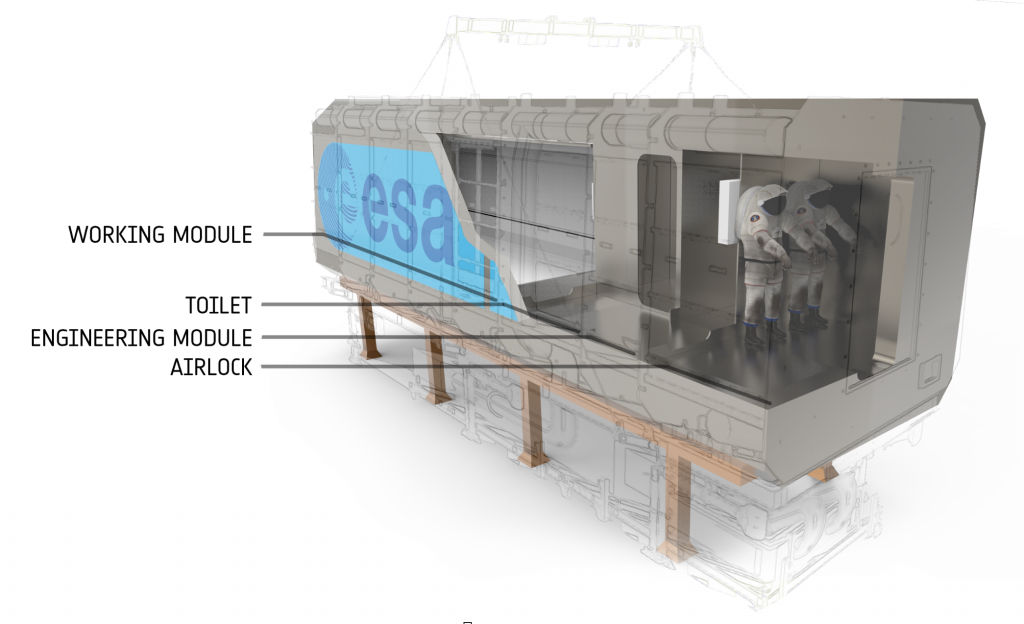
Section model of he Future Lunar Exploration Habitat (FLEXHab). Credit: ESA-E. Rosselli Del Turco
The facility will also host a self-sufficient, regenerative power system based on solar energy and hydrogen technology. Photovoltaic panels on the hall’s roof will be used to collect sunlight during the day. This energy will then be used to split water into oxygen and hydrogen to be used in fuel cells and ensure energy supply even during shadow or night periods.
On the Moon, a night can last for two weeks, followed by another two weeks of day. As a result, energy generation, storage and utilisation represent another distinct field of research for lunar activities and will find a place in the LUNA facility.
In fact, only selected locations at the polar regions of the moon are illuminated by the sun for longer periods of time. For this reason, and also because of suspected water deposits, there are currently plans to build a possible lunar base near the south pole of the Moon.
Boosting our knowledge
ESA astronauts and researchers currently use natural Moon-like environments, or field analogues, to test new tools or train geological knowledge for future planetary missions. At ESA, this includes the Neutral Buoyancy Facility (NBF) for underwater spacewalk training and tool testing, the Pangaea training course in which astronauts learn the basics of basics of field geology and astrobiology for planetary exploration, and the CAVES training in which teams of astronauts journey deep underground to perform scientific experiments, map the environment and chart and document their activities.
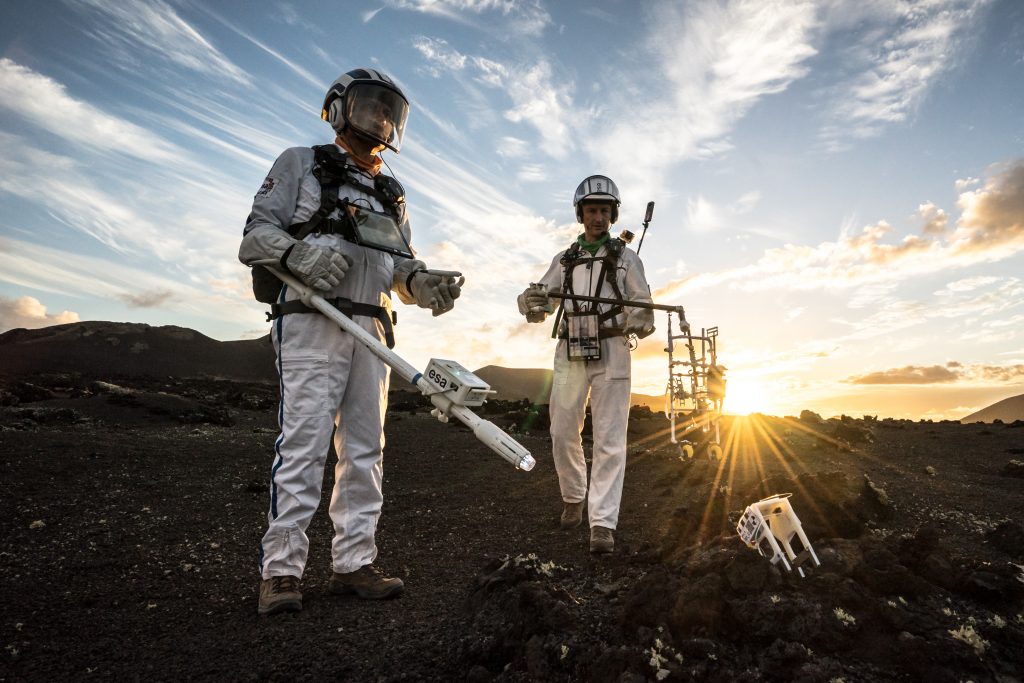
ESA astronaut Matthias Maurer and ESA spacewalk instructor Hervé Stevenin during 2018 Pangaea-X test campaign in Lanzarote. Credits: ESA–A. Romeo
ESA astronauts also participate in analogue missions run by partner agencies such as NASA’s Extreme Environment Mission Operations (NEEMO), in which astronauts live and work in an underwater habitat off the coast of Florida, USA.
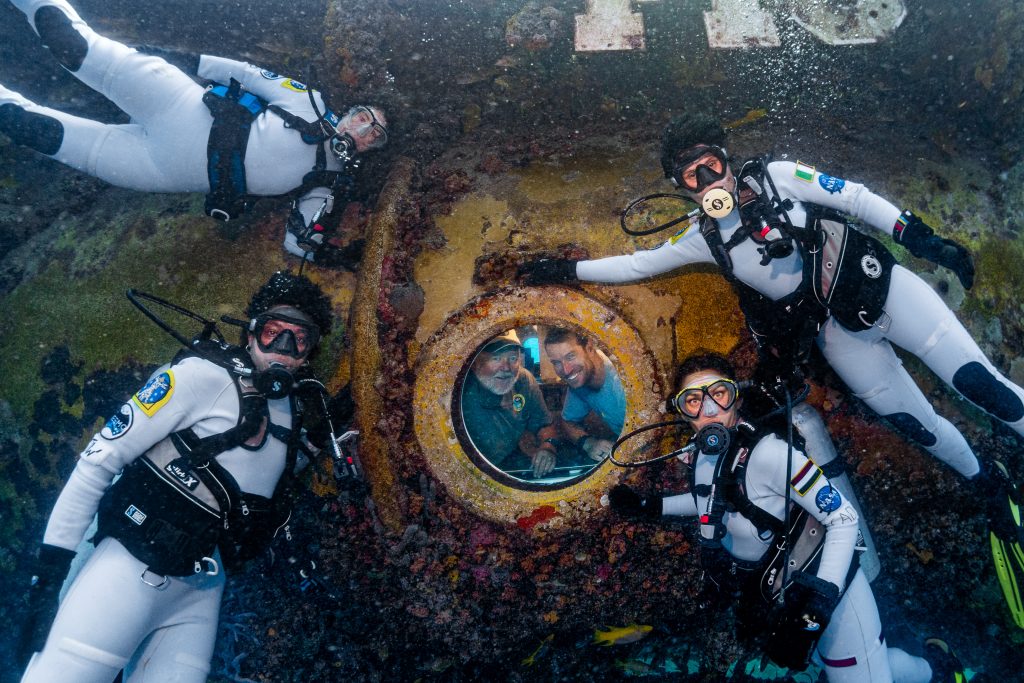
Full crew of NEEMO 23 at the Aquarius undersea habitat. Credit: NASA/ESA
“Through Pangaea training we can simulate the Moon’s geology and surface excursions to a degree. But we cannot reliably recreate light, dust or reduced gravity conditions in open terrain and are dependent on the weather,” explains Juergen.
“While robotic testing or virtual reality (VR) applications in simulated environments are already possible in smaller laboratories, there is not yet an interface between this and outdoor geological field training. LUNA will close this gap and enable training in a large-scale, controllable environment,” he adds.
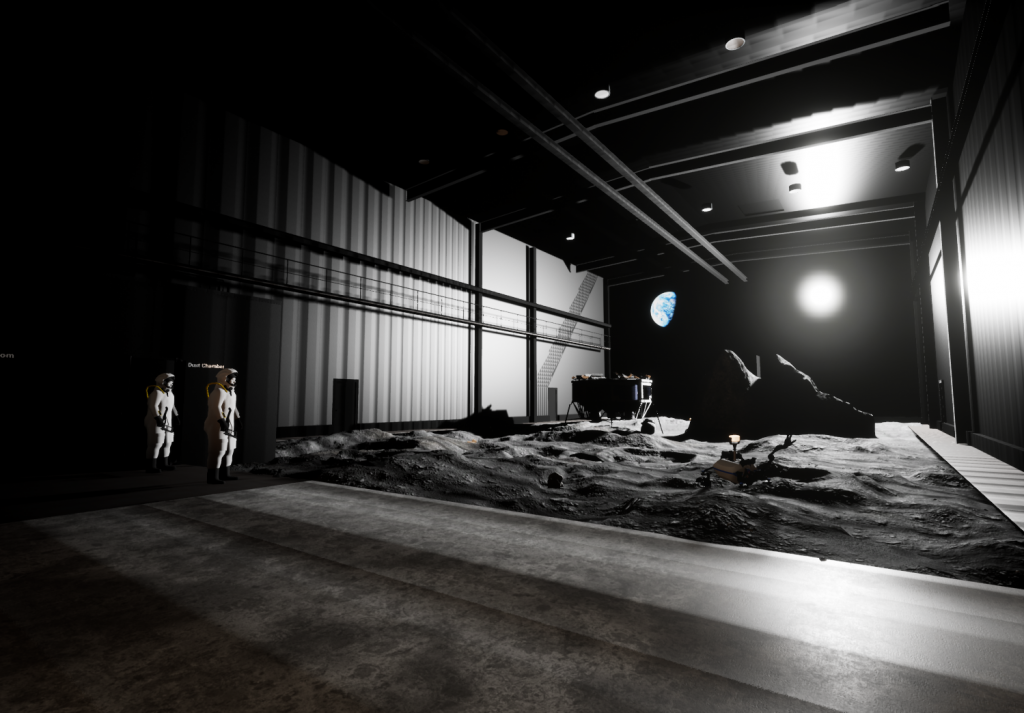
VR model of LUNA’s main hall containing the regolith testbed area with dust chamber visible. Credits: ESA/DLR-F. Rometsch
This will benefit also another research area for LUNA – In Situ Resource Utilisation (ISRU). This is the use of materials found or manufactured on the Moon. These techniques will allow a sustainable human presence on the Moon, as they use local resources to avoid constant resupply from Earth.
ISRU research activities carried out in LUNA will address all aspects of setting up the facilities and excavating/collecting the lunar feedstock, but it could also include building bricks or tools from lunar dust, known as regolith, using 3D printing or sintering technologies. Other experiments include extracting water and oxygen from regolith and storing and extracting thermal energy inside and from regolith.
To get even closer to realistic lunar conditions, a crane-like device with a suspension system positioned beneath the hall’s ceiling will simulate the Moon’s gravity (1/6th of that on Earth) for astronauts and objects as they move around the hall.
This will not only help to complement spacewalk training in the NBF, but also enable physiology research activities within LUNA such as analysing human mobility in lunar gravity and identifying safe working conditions, as well as aspects of physical fitness and rehabilitation.
Lunar testing for everyone
Beyond research on the International Space Station (ISS) in low-Earth orbit (LEO), and on the future Gateway station in cislunar orbit, exploration of the lunar surface in connection with the development of infrastructure there will be the next step for international space exploration.
As a hub of expertise for the future of lunar and planetary exploration, LUNA fits perfectly in between existing ESA and DLR training and testing facilities and complements the other analogue activities.
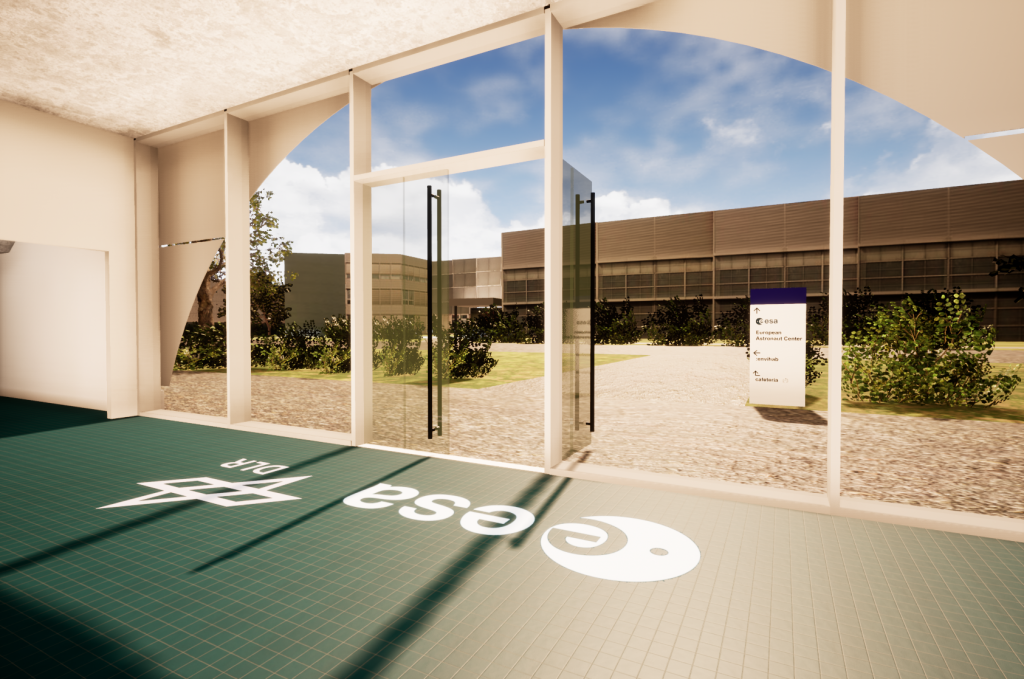
VR model of LUNA’s main entrance hall, with the EAC visible on the opposite side. Credits: ESA/DLR-F. Rometsch
“LUNA enables strong synergies and creates the link between technology, operational concepts, international partnerships and training for future missions,” explains Juergen.
Usage will not be restricted to European space agencies alone. As an open platform, it will also available to international partners, researchers and institutions, as well as related industry.
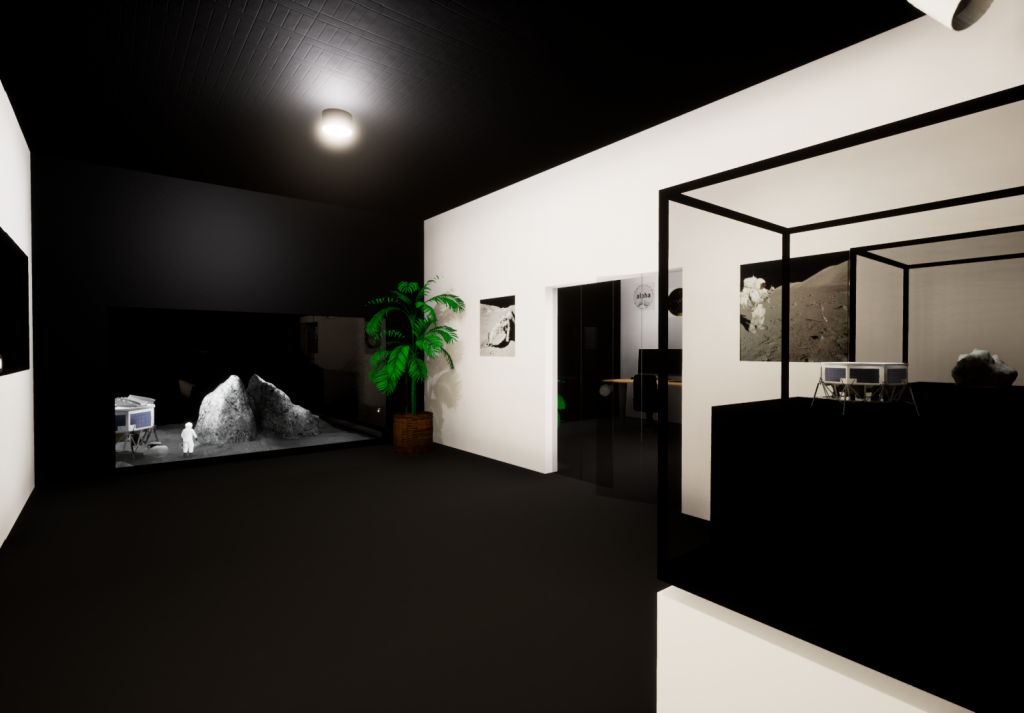
VR model of LUNA’s visitor’s room displaying samples and with a view into the main hall containing the regolith testbed area. Credits: ESA/DLR-F. Rometsch
“In addition to what we can initially offer with this platform, it is also expandable for future needs and open to anyone who wants to join us in advancing lunar exploration. Our goal is that all agencies, researchers, institutions and industry partners who want to go to the Moon will be able to access this unique facility, which will eventually then also bring us closer to the prospect of future crewed missions to Mars”, adds Juergen.


